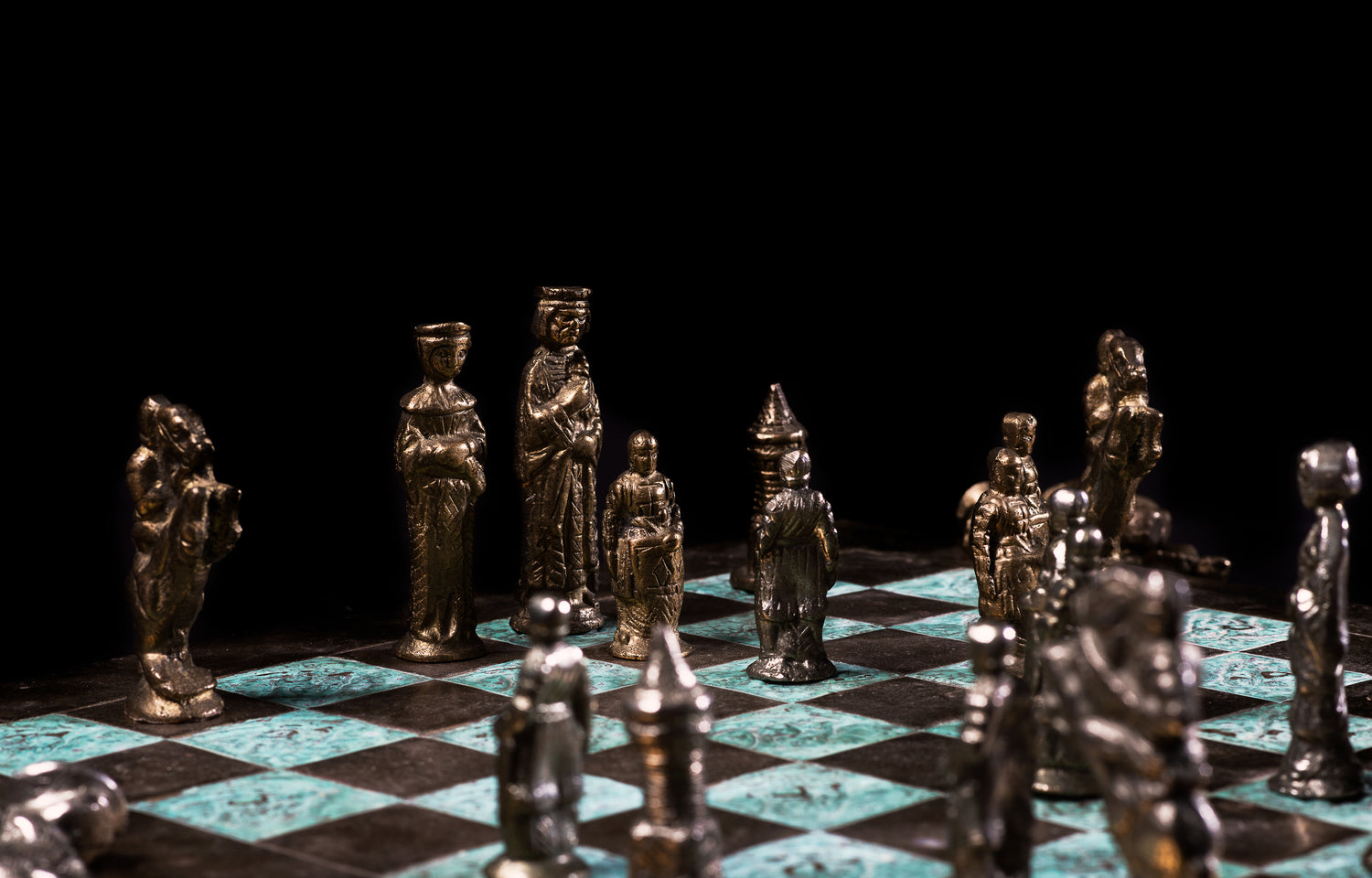The Timeless Appeal of Wooden Chess Pieces: A Collector's Guide
Chess, a game of strategy and intellect, has captivated minds for centuries. While the game itself is the primary focus, the aesthetic appeal of the chessboard and pieces significantly enhances the overall experience. Among the various materials used for chess pieces, wood stands out for its timeless elegance, warmth, and tactile quality. This guide explores the allure of wooden chess pieces, delving into their history, craftsmanship, and the considerations for collectors.
The History of Wooden Chess Pieces
Wooden chess pieces have a rich history, dating back to the origins of the game itself. Early chess sets were often crafted from wood, bone, or ivory, reflecting the available materials and craftsmanship of the time. Over the centuries, wood remained a popular choice due to its versatility, availability, and the ease with which it could be carved and shaped. Different styles and designs emerged, influenced by cultural and artistic trends. The Staunton chess set, designed by Nathaniel Cooke and named after Howard Staunton, a leading English chess master, became the standard for tournament play and is widely recognized today. The Staunton design, typically made of wood, emphasized functionality and elegance, making it a timeless classic.
Types of Wood Used in Chess Pieces
Various types of wood are employed in the creation of chess pieces, each offering unique characteristics in terms of color, grain, and durability:
- Ebony: Prized for its deep black color and fine grain, ebony is a luxurious choice for chess pieces. It is dense and durable, making it ideal for pieces that will withstand frequent use. Ebony chess sets are often considered high-end collectibles.
- Rosewood: Known for its rich reddish-brown hue and attractive grain patterns, rosewood adds warmth and sophistication to chess pieces. It is a popular alternative to ebony, offering a similar level of durability and aesthetic appeal.
- Boxwood: A light-colored hardwood with a smooth texture, boxwood is often used for the white pieces in a chess set. It is easy to carve and polish, making it a versatile choice for intricate designs.
- Sheesham: Also known as Indian rosewood, sheesham is a durable and attractive wood with a golden-brown color. It is commonly used for chess pieces and boards, offering a balance of affordability and quality.
- Maple: A light-colored hardwood with a fine grain, maple is often used for both chess pieces and boards. It provides a clean and contemporary look, making it suitable for modern chess sets.
Craftsmanship and Design
The craftsmanship involved in creating wooden chess pieces is a testament to the skill and artistry of woodworkers. Each piece is carefully carved, shaped, and finished to ensure both aesthetic appeal and functional playability. The design of the pieces can vary widely, ranging from traditional Staunton patterns to more elaborate and artistic interpretations. Collectors often seek out chess sets with unique designs, intricate carvings, or historical significance.
Factors to Consider When Collecting Wooden Chess Pieces
When building a collection of wooden chess pieces, several factors should be taken into account:
- Wood Type: The type of wood used affects the appearance, durability, and value of the chess pieces. Consider the characteristics of different woods and choose pieces that appeal to your aesthetic preferences and budget.
- Design and Style: The design of the chess pieces is a matter of personal taste. Whether you prefer the classic Staunton design or more contemporary styles, select pieces that resonate with your artistic sensibilities.
- Craftsmanship: Examine the quality of the carving, shaping, and finishing. Well-crafted pieces will exhibit smooth surfaces, clean lines, and attention to detail.
- Condition: The condition of vintage or antique chess pieces can affect their value. Look for pieces that are well-preserved and free from significant damage.
- Rarity: Rare or limited-edition chess sets can be highly valuable to collectors. Research the history and provenance of the pieces to determine their rarity and potential value.
Caring for Wooden Chess Pieces
To maintain the beauty and longevity of wooden chess pieces, proper care is essential. Avoid exposing the pieces to direct sunlight, extreme temperatures, or humidity, as these conditions can cause warping, cracking, or fading. Clean the pieces regularly with a soft, dry cloth to remove dust and dirt. For deeper cleaning, use a mild wood cleaner and follow the manufacturer's instructions. Store the chess pieces in a protective case or box when not in use to prevent scratches and damage.
The Enduring Legacy
Wooden chess pieces represent more than just a functional part of a game; they embody history, craftsmanship, and artistic expression. Whether you are a seasoned collector or a casual chess enthusiast, the timeless appeal of wooden chess pieces is undeniable. By understanding the history, materials, and craftsmanship involved, you can appreciate the beauty and value of these enduring treasures.
By embracing the rich tradition of wooden chess pieces, you not only enhance your enjoyment of the game but also preserve a piece of cultural heritage for future generations.

